One of the most important decisions when building your PC is choosing the right CPU cooler. Your computer’s CPU is one of the most important components inside your system. And it is essential to make sure that your CPU runs at an appropriate temperature. CPU coolers are heat sinks, which are specifically designed to minimize excess heat that the Central Processing Unit produces. There are different types of CPU cooler in the market, which we will be discussing in this article.
If you choose the right CPU cooler, it ensures that your PC will operate at an appropriate temperature extending the lifespan of your CPU. And if you don’t, overheating your CPU might lead to replacing your CPU, or in the worst case, replacing your motherboard. That is why it’s essential to choose the right types of CPU cooler for your system.
What are CPU Coolers?
CPU coolers or the Central Processing Unit coolers are the components that are designed to draw heat out of your CPU and other components from the system. Before I get into the main topic of the article, I want to give you a quick run-down on how the coolers work.
There are mainly two components in your CPU cooler. One is the heatsink that uses copper, aluminum, or the combination of both. This heatsink draws out heat from your processor through heat pipes. The second component is the cooler or the fan. As the heatsink draws heat out of your processor, it needs to be disseminated somewhere else, so; a fan blows air through heatsink to move the heat into the air, which is then moved out of the system with other fans that exhaust air out of your system. This process of drawing out heat and disseminating heat effectively keeps the CPU within safe operating temperatures.
Types of CPU Coolers
During the use of the computer, it continuously generates much heat, so your processor needs one or the other types of CPU cooler to make your system run smoothly and at an appropriate temperature. Here in this article, I have categorized CPU coolers into three different types; let’s look at some of the popular types of CPU coolers.
Heat Sink
There are plenty of components that use a heat sink to lower the temperature of that part. In the case of your CPU / processor, a heat sink is placed directly onto the CPU chip with thermal grease wedged between the two components. Adding the thermal paste in between the heatsink and the processor makes sure that the heat generated by the processor is effectively transferred to the heatsink.
Heat sinks are common among older computers and computers that do not generate a lot of heat, a home PC, or an office PC. However, one problem with heat skinks is that, over time, the dust that accumulates on the heat sink can reduce the airflow reducing its efficiency to cool down the processor. So, you need to make sure that you blow out the dust out of the heat sink once in a while. And it’s always better to replace the old thermal paste every 2-3 years according to the use of the computer.
Heat sinks can be categorized into two types’ passive heat sink and active heat sink. Let’s look into detail about these heat sinks in detail.
Passive Heat Sinks (Passive Coolers)
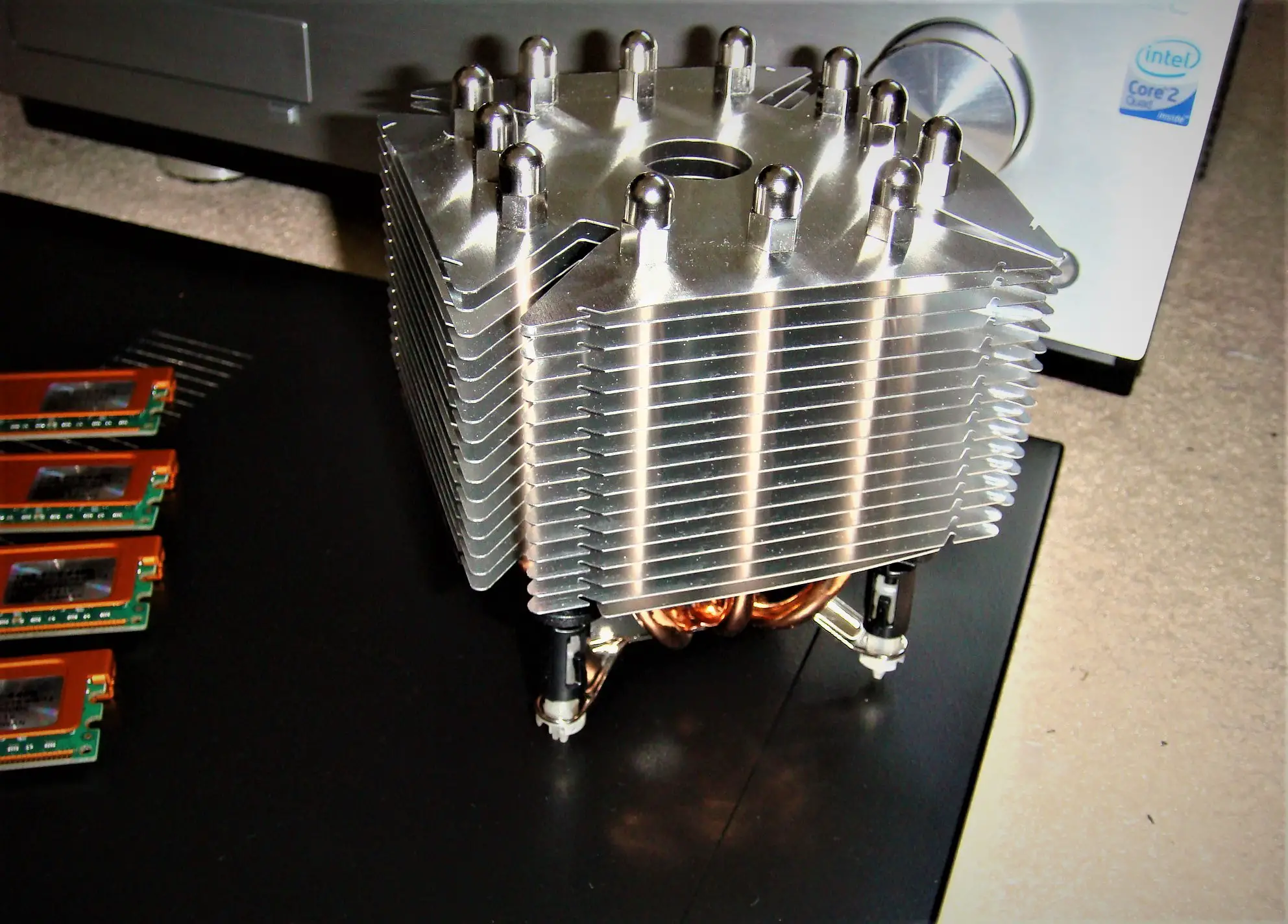 Passive heat sinks are those that do not have any mechanical components attached to it. These heatsinks are made up of aluminum finned radiator that dissipates heat through convections. The passive heat sink is 100% reliable as it doesn’t have any mechanical components. You don’t need to worry about the fan not working to cool down the heatsink. However, you need to place your passive heat sink where there is a steady airflow moving across the fins of the heatsink. These heatsinks are bulky and big as compared to an active heatsink.
Passive heat sinks are those that do not have any mechanical components attached to it. These heatsinks are made up of aluminum finned radiator that dissipates heat through convections. The passive heat sink is 100% reliable as it doesn’t have any mechanical components. You don’t need to worry about the fan not working to cool down the heatsink. However, you need to place your passive heat sink where there is a steady airflow moving across the fins of the heatsink. These heatsinks are bulky and big as compared to an active heatsink.
Active Heat Sink (Active Coolers)
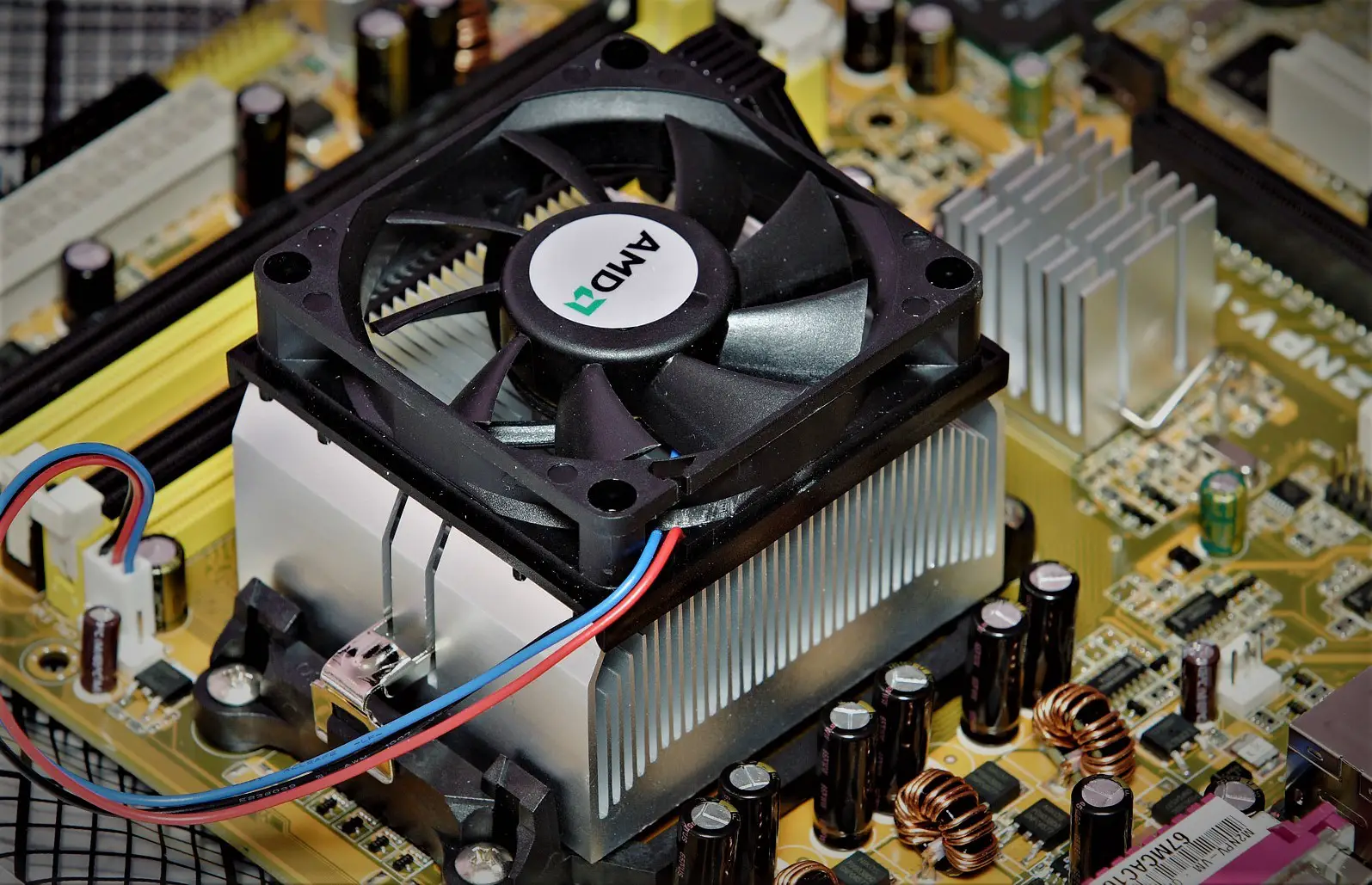 Active Heat Sink uses a fan that utilizes power from the power supply to cool down the heat sink. It’s the combination of both the fan and the heat sink. As the heat sink draws heat out of the processor, the fan attached to the heatsink constantly moves out the heat from the heatsink cooling the processor. You will need to clean your heat sink as well as the fan with an air blower to move clogged dust out of your heat sink.
Active Heat Sink uses a fan that utilizes power from the power supply to cool down the heat sink. It’s the combination of both the fan and the heat sink. As the heat sink draws heat out of the processor, the fan attached to the heatsink constantly moves out the heat from the heatsink cooling the processor. You will need to clean your heat sink as well as the fan with an air blower to move clogged dust out of your heat sink.
Heat Sink Cooler Pros
- Price is generally low (price to performance ratio is high)
- Easy to maintain (or no maintenance required)
- Consumes very less power
- Great performance for normal users
Heat Sink Cooler Cons
- Not suitable for those who perform a heavy task on their machine
- Some heat sink might be bulky and heavy
- The heat sink has limited cooling potentials
Liquid Cooling System
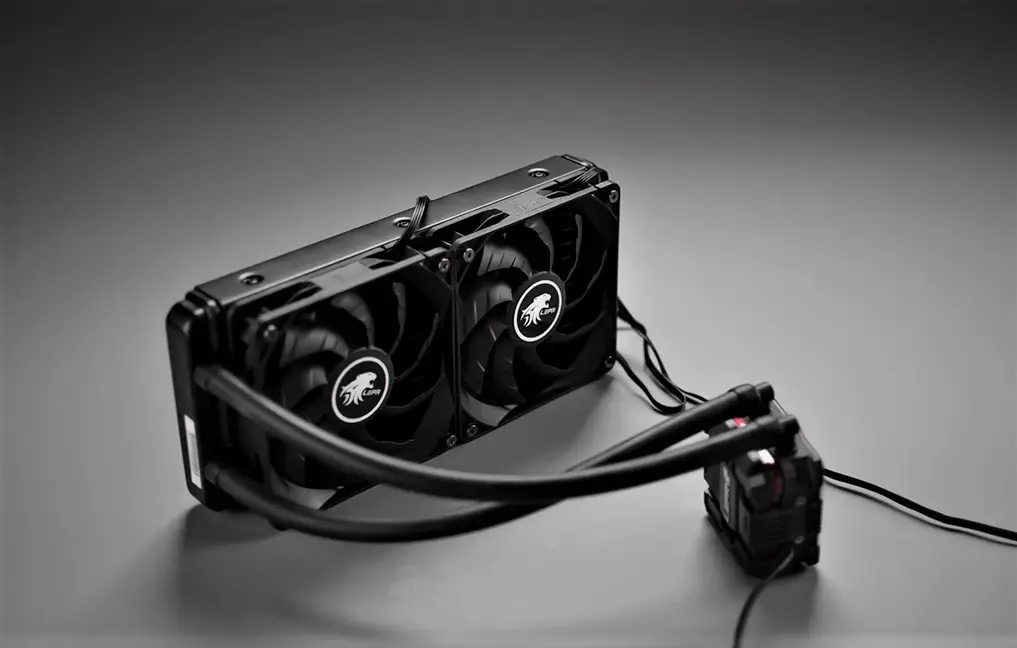 The liquid cooling system is the most effective type of CPU cooler. Liquid Cooling System uses distilled water since water has a high specific heat capacity. Liquid cooling incorporates the principle of thermodynamics; heat moves from warmer objects to cooler objects. Therefore these coolers offer better performance, are much quieter, and look cool.
The liquid cooling system is the most effective type of CPU cooler. Liquid Cooling System uses distilled water since water has a high specific heat capacity. Liquid cooling incorporates the principle of thermodynamics; heat moves from warmer objects to cooler objects. Therefore these coolers offer better performance, are much quieter, and look cool.
Liquid cooling is not for everyone! So, who needs a liquid cooling system? – The hardcore techies or gamers who need additional cooling. The power users or gamers take their processor to the next level. They perform such a heavy task; even the best heatsink coolers cannot disseminate heat out of the CPU.
Liquid Cooling Systems in PC is a lot like the cooling system used in vehicles. There are three components in a liquid cooling system: A water block, a radiator, and a kit that you attach to your processor.
Working Principle of Liquid Cooling System
- You first set up your water-block filling it up with distilled water,
- Next, to your attach the processor kit to the processor,
- Now you attach radiator (heat exchanger) to the vents of the CPU casing,
- Connect water tubes reading the liquid cooling kit manual and again fill up the water-block,
- Finally, run the system.
When you turn on the system, first, the water from the water-block runs through the water tube to the CPU. The hot wire from the processor kit is then moved to the radiator. Often a radiator needs a fan of two or Peltier coolers to keep the water inside the radiator tube cool, which is again transferred to water-block.
Despite the efficiency of a liquid cooling system, which is rarely used in a computer system. The real danger that comes with liquid cooling is in the case of leaking. Water can seep through your motherboard and other critical parts, which can damage your computer system.
One downside of water cooling is its comparatively high cost. The most expensive heatsink cooler cost around $50, while the cheapest water cooling system costs whopping $100.
Liquid Cooling Pros
- Liquid Cooling has the highest cooling potentials
- These coolers are the best for power users
- Your computer internal will look great
Liquid Cooling Cons
- Price is generally higher (price to performance is relatively lower)
- As liquid cooling system contains water, it has a high chance of leaking and damaging your system
- It consumes more space inside the CPU.
Fans
Other than the heatsink, PC also uses a variety of fans to move heat in and out of the system. The computer is an enclosed system that has vents to move air out. However, having vents don’t really move the heat out of the system, so you need a fan that blows cool air into the system and a fan that exhausts hot air out of the system.
How to Maintain CPU Coolers?
No matter what type of CPU cooler you choose, you need to maintain the cooler to maximize its efficiency. Here are some of the tips to maintain CPU coolers.
Keep it clean
The dust and other particle build up in your heat sink will lower the performance of your cooler. So, it’s important to clean up the dirty ones to make your cooling smooth again.
Ensure Optimal Airflow
Your CPU casing is an enclosed system; it needs cool air circulation inside the casing to cool the heat sink properly. If there is no adequate airflow inside the casing, the heat produced by the processor circulates, and the heatsink fails to cool down the processor. So add at least one cooling fan that blows cool air into the system and one to exhaust hot air out.
Separate all parts as much as possible to leave room for every component inside your computer to breathe. Also, use cable ties to manage your cables to make sure that cool air circulates inside your system efficiently.
Choose the Best Cooling System for Your Build
Not all computer works and performs the same. Most can work very well with a small heat sink cooler, while others need specific heatsink like a liquid cooling system to run the processor smoothly. So, choose the right cooler according to your needs.
Re-paste Thermal Grease
Thermal paste lies between the Heat Sink and the processor, which helps to transfer heat from the processor to the heat sink effectively.
As time goes on, dust, dirt, and the heat of the processor degrades the thermal grease, drying it out. Dried out thermal grease does not perform well while transferring heat from the processor to the heatsink, which increases your processor temperature. This is the reason you need to re-paste the thermal paste once every 6 to 12 months.
How to Choose Best CPU Cooler for Your PC
Now that you have a bit more idea about the types of CPU coolers, now it’s time to know what is the best type that you require before buying a CPU cooler?
Here are some of the tips that might help you choose the best air ad liquid CPI coolers out there in the market.
- Before buying any type of CPU cooler first, you need to find out how much heat does your PC produce. There are various applications that provide you with your internal temperatures. You can check my previous article on “How to monitor your CPU and GPU temperature” for more detail.
- Next is your CPU cooler adapter. CPU cooler adapters are of different sizes. Some CPU coolers need an extra adapter to hold onto while most get attached to the board itself with a twist-and-lock function. So before getting the cooler, check for your adapter size.
- CPU coolers can get as expensive as $600; you wouldn’t want to spend $600 when you only need a $50 worth of cooling power, isn’t it? Likewise, you cannot get a $50 worth of cooler when your system requires additional cooling.
- So, buy the type of CPU cooler that your system requires. If you are a heavy gamer or a person that requires heavy procession, you definitely need a liquid cooling system that provides additional cooling to your CPU. But, you don’t perform a heavy task on your system, a simple heat sink cooler will work just fine for you.
- Case fans come in many sizes 40mm to 360 mm, and the fan blades can also make a huge difference in noise. While buying cooling the most important spec, you need to check is the RPM and the pressure that they can provide. Choose what your system suits the best.
Conclusion
CPU coolers are as important as other components of your computer system. There are various types of CPU coolers that you can choose according to your needs.
Whether you are trying to overclock your PC to its highest potential or achieve only a quite cooler or to prevent throttling at the stock speed, you need to pay close attention to your CPU cooler.
So in this guide, we explored the types of CPU coolers, their pros and cons, and how to maintain the CPU coolers. There are different ways to lower CPU temperature, which I have already written about. If you want to know a bit more to extend your CPU’s lifespan, do read the article on “How to lower CPU temperature.”

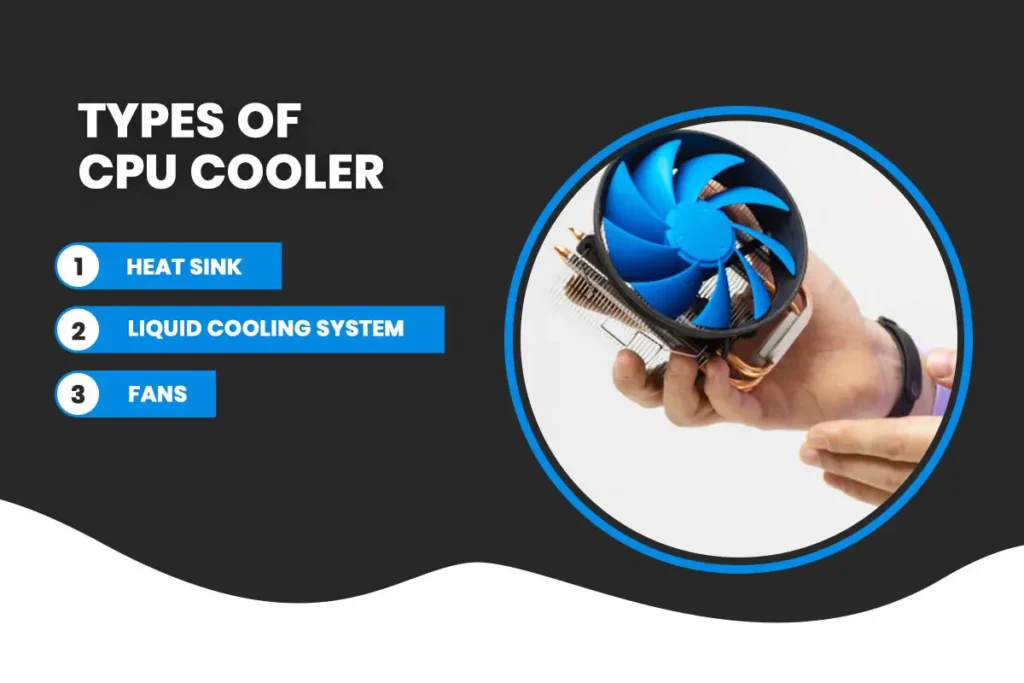

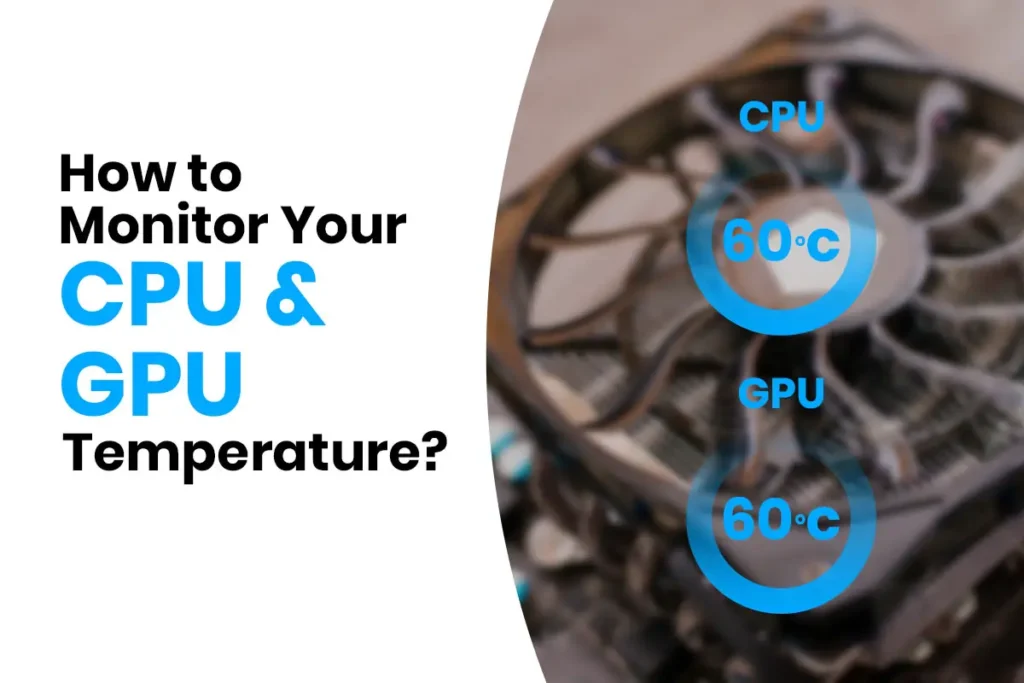

![How To Clear CMOS To Reset BIOS Settings and Why [Updated 2020]](https://onlinehelpguide.com/wp-content/uploads/2020/09/How-To-Clear-CMOS-To-Reset-BIOS-Settings-and-Why.webp)